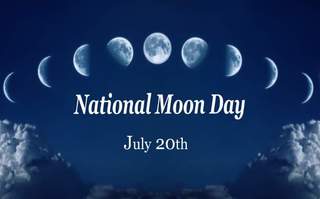
Stop and think about how much we know about the moon. How did we gain the knowledge ? One of the pivotal agencies in moon exploration: NASA.
NASA is a big tent. Lots of people associate the agency with only its most spectacular achievements: the moon landing, space shuttles, the International Space Station, plans to someday put a person on Mars. It's easy to think of NASA as space exploration and nothing more. Within the very name—National Aeronautics and Space Administration—you'll find an oft-forgotten part of the NASA mission. NASA's X-plane research had led the way to amazing aircraft innovations without ever leaving the atmosphere.
Earth science is another severely under-appreciated chunk of what NASA does. It might seem weird that America's space exploration agency devotes so much energy to our home world, but no other government agency is equipped to study our planet from afar and tell us what's happening in the big picture. Unless you want to let the military take over.
Besides, when it comes to studying the Earth, you have to do a bunch of work from space. NASA's GOES satellites (the Geostationary Operational Environmental Satellite system) provide a constant stream of Earth observation useful both for short-term weather forecasting and long-term climate forecasting. The DSCOVR mission (Deep Space Climate Observatory) watches for the powerful solar storms that could wreak havoc on our planet and all its advanced technology. NASA satellites track wildfires and sea ice. They follow hurricanes and monitor sea surface temperatures. They are the only eyes and ears that can see our home from another frame of reference, and with terrifying objectivity.
Parts of NASA’s programming are under constant fire; divided politically along party lines. NASA’s Earth-science budget is $102 million, or 5 percent of the program’s annual budget, and it almost exclusively targets missions aimed at understanding climate change — the ocean monitoring program PACE; the Orbiting Carbon Observatory-3; the Deep Space Climate Observatory; and the CLARREO Pathfinder, which measures heat in Earth’s atmosphere.
The NASA Education office, which runs camps and enrichment programs, provides internships and scholarships for young scientists, and oversees efforts to support women and underrepresented minorities in science, technology, engineering and math, or STEM, fields.
Here's a notion that ought not be partisan: This is our planet. We want the best for it, now and in the future. And it's good to know what's happening to the place we live. That goes for the Earth's climate just as much as it does for stopping a solar storm from crippling our communications technology or spotting a doom asteroid headed this way so we can figure out what to do about it.
Who runs the satellites and telescopes we use to watch our world, and how we pay for them, is a worthy topic for a grown-up discussion. So appreciate our technological advances in understanding the moon today and mobilize to advocate for the agencies that help us advance our knowledge!
 RSS Feed
RSS Feed